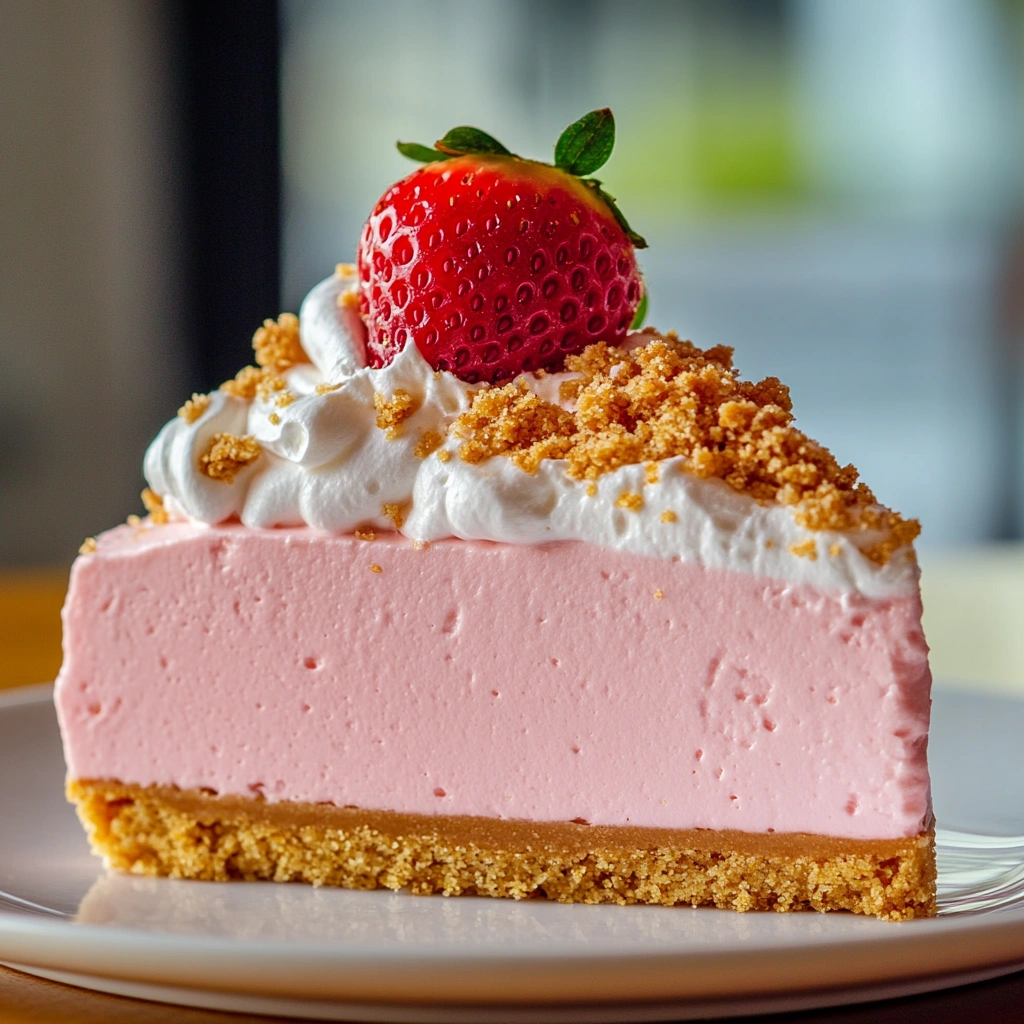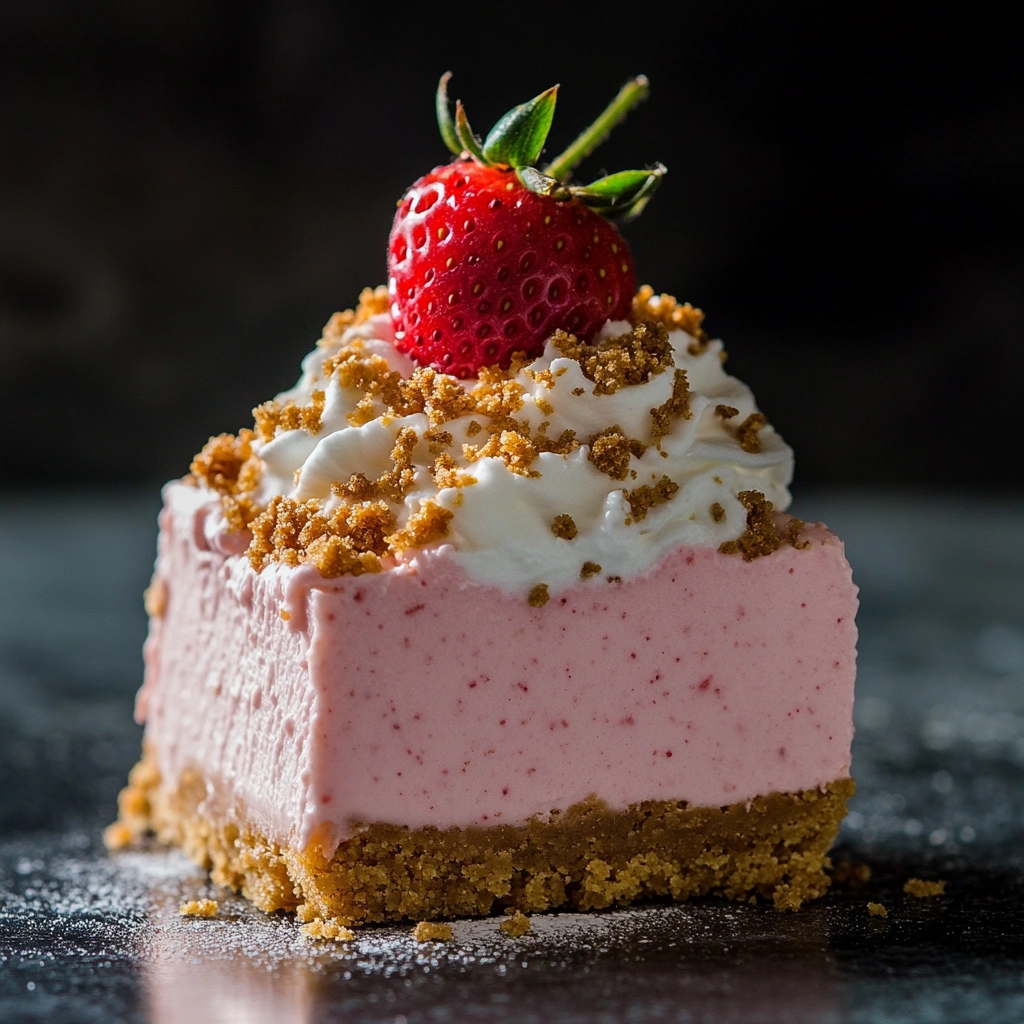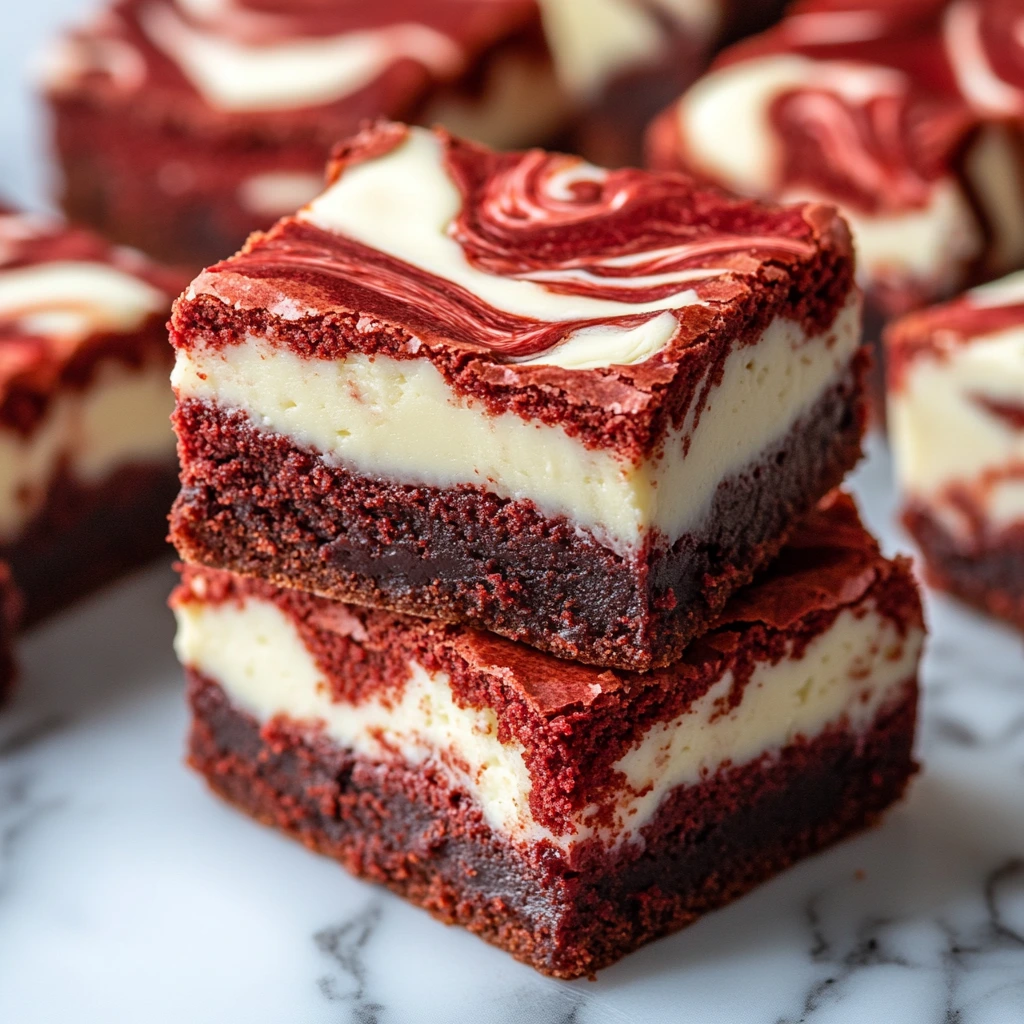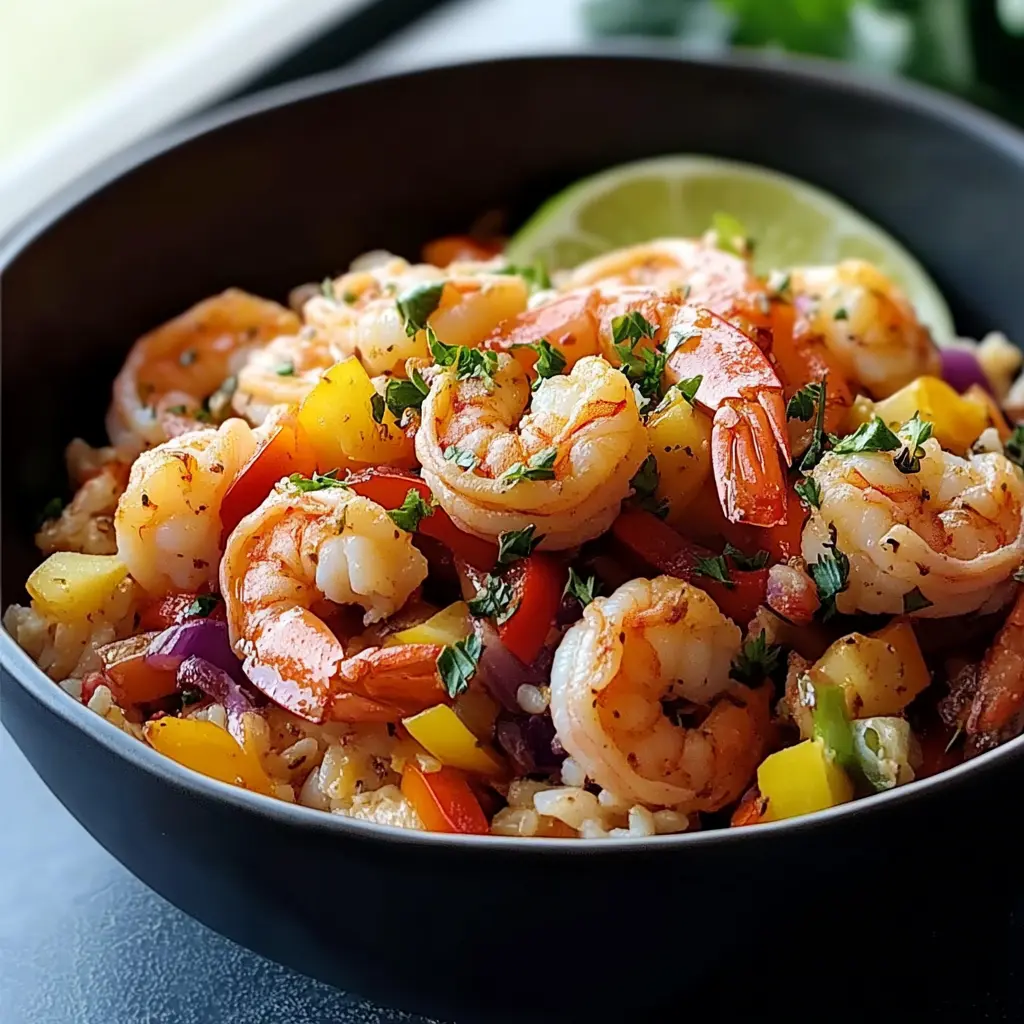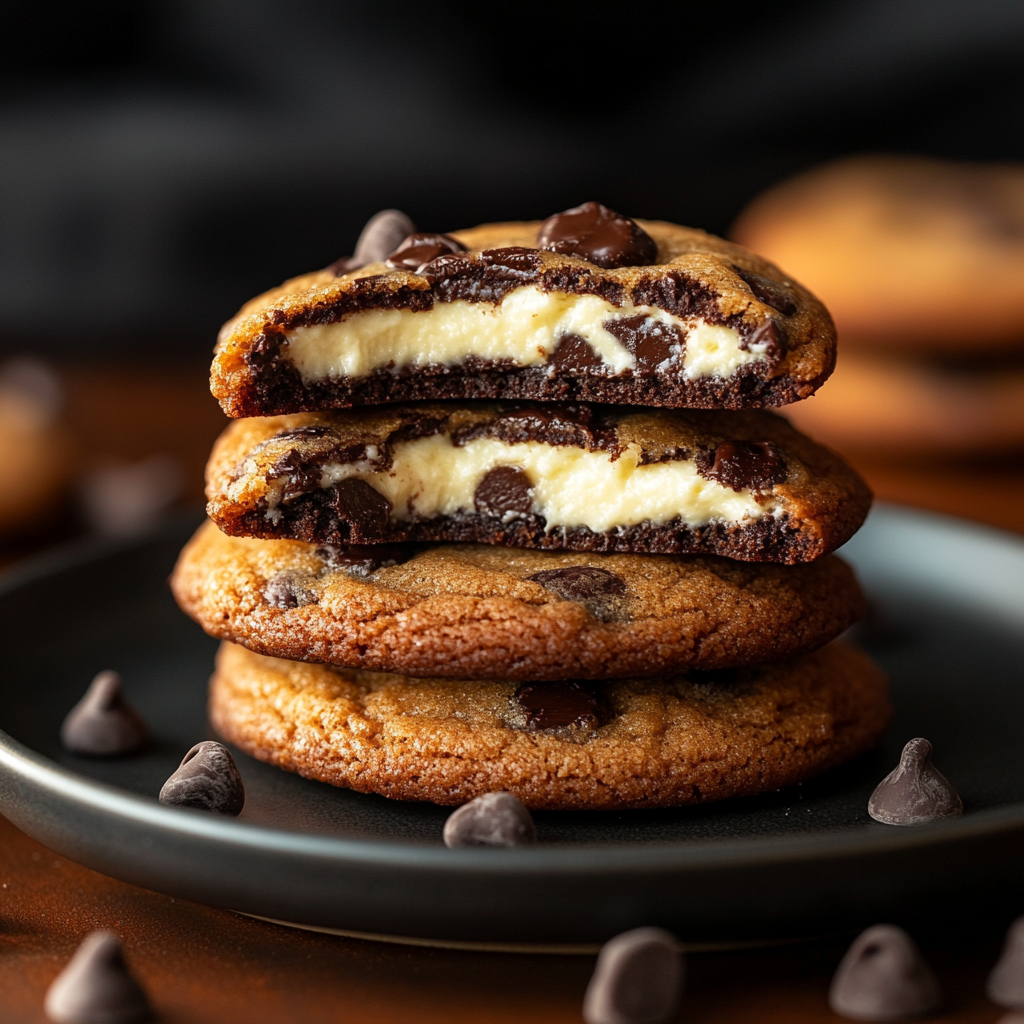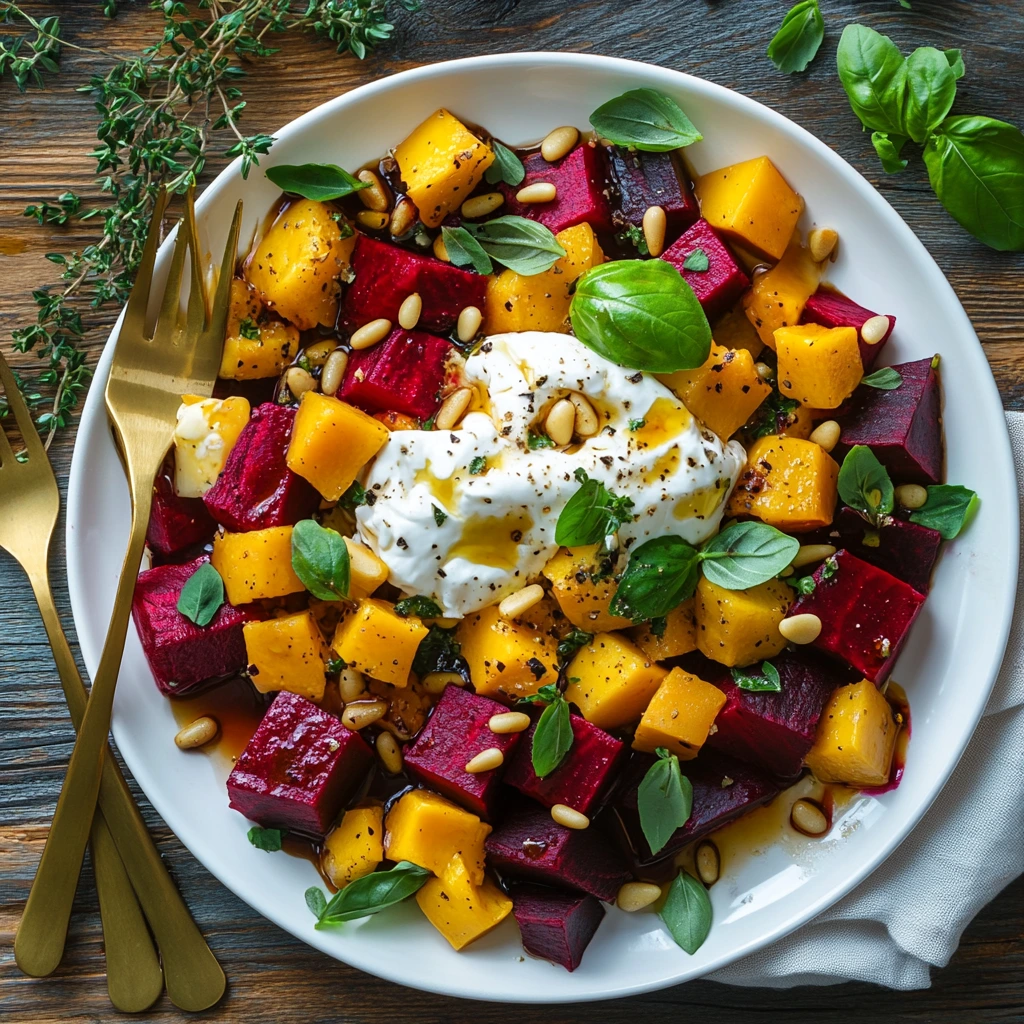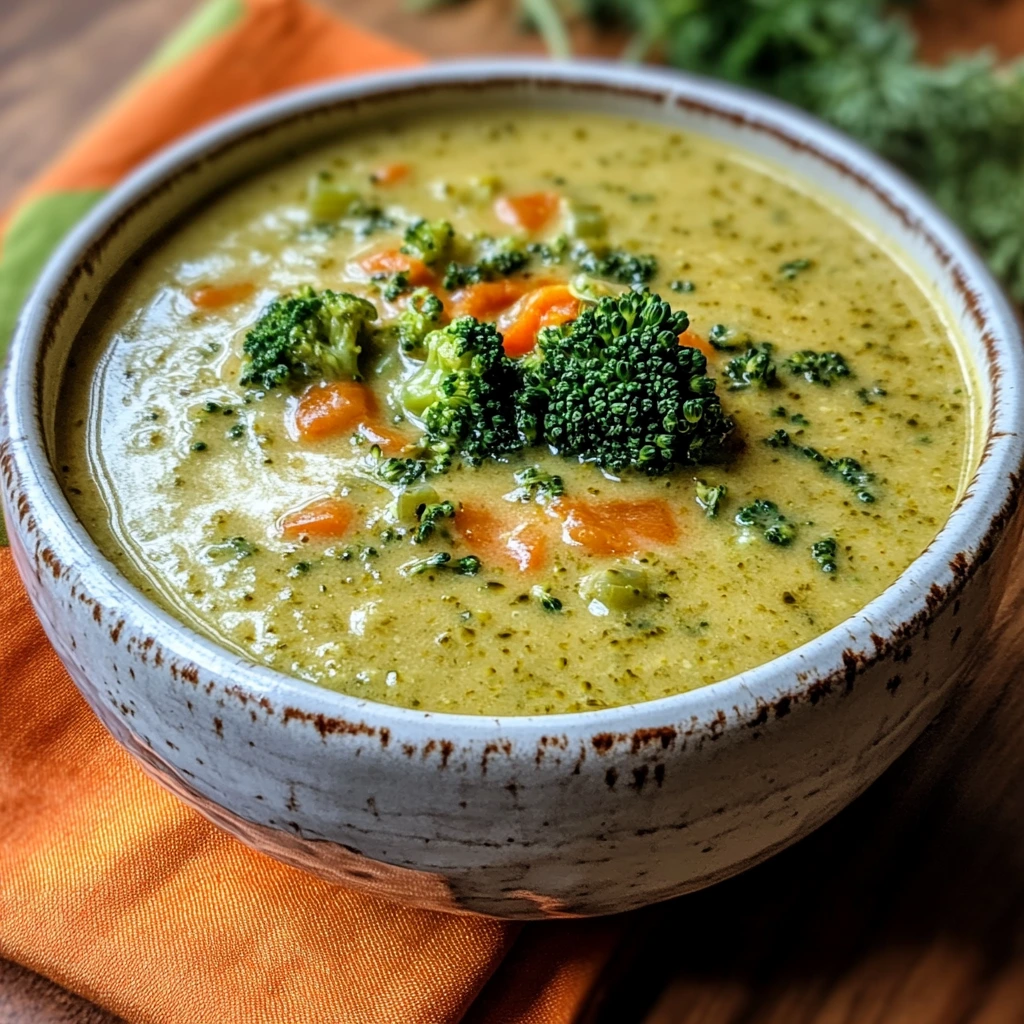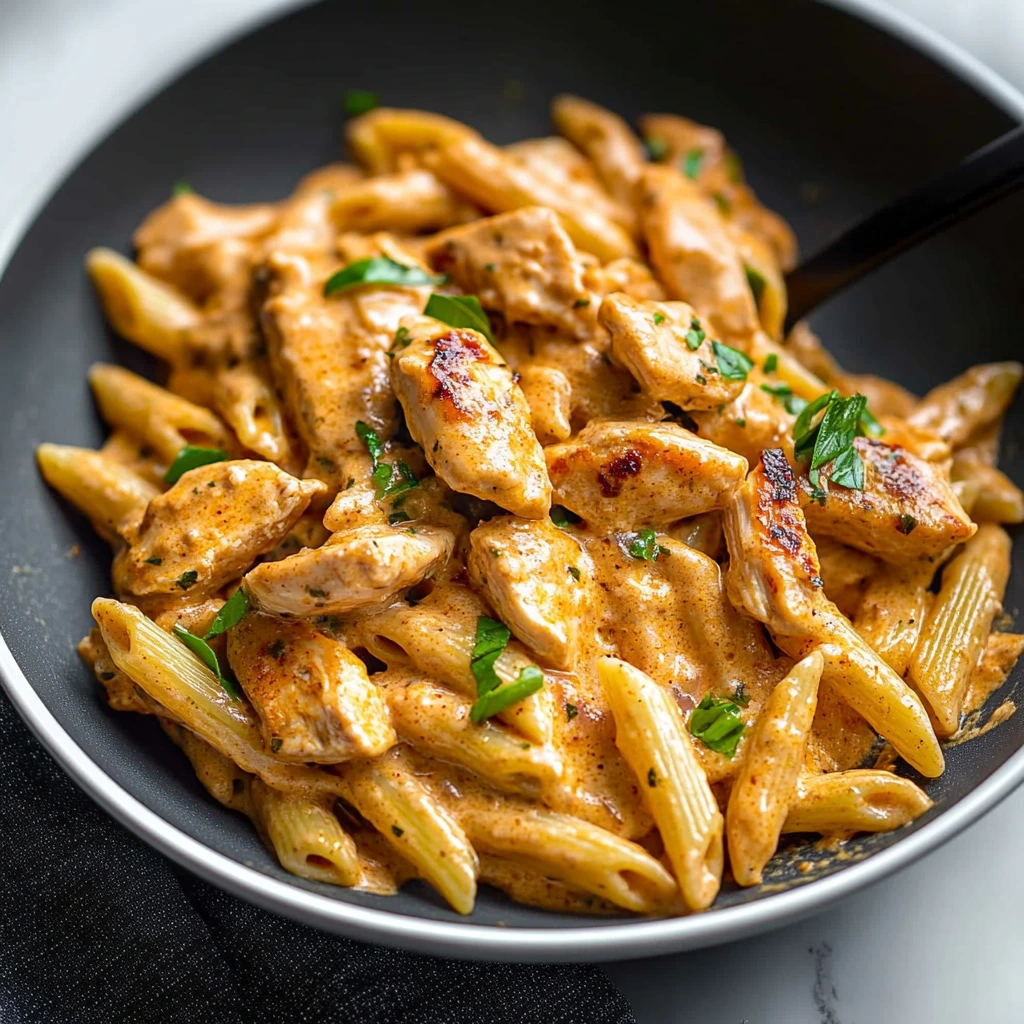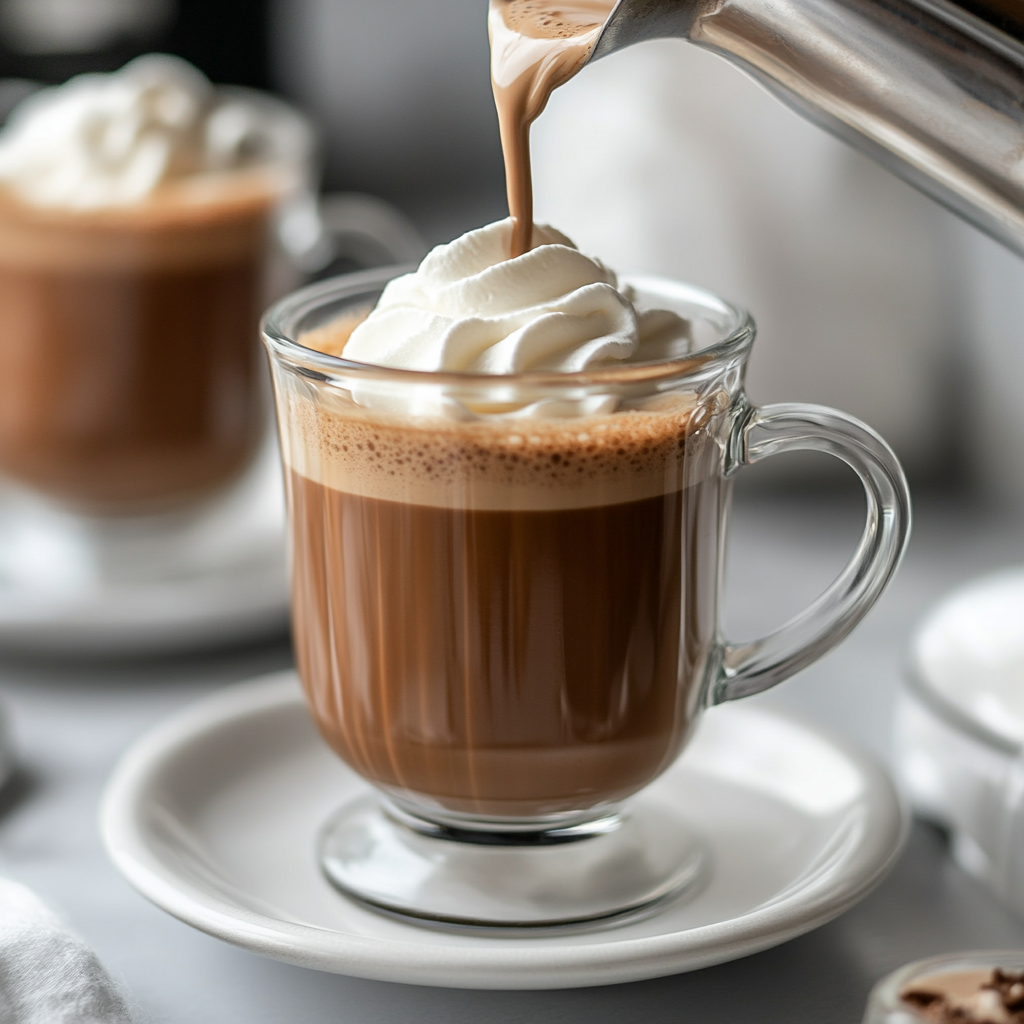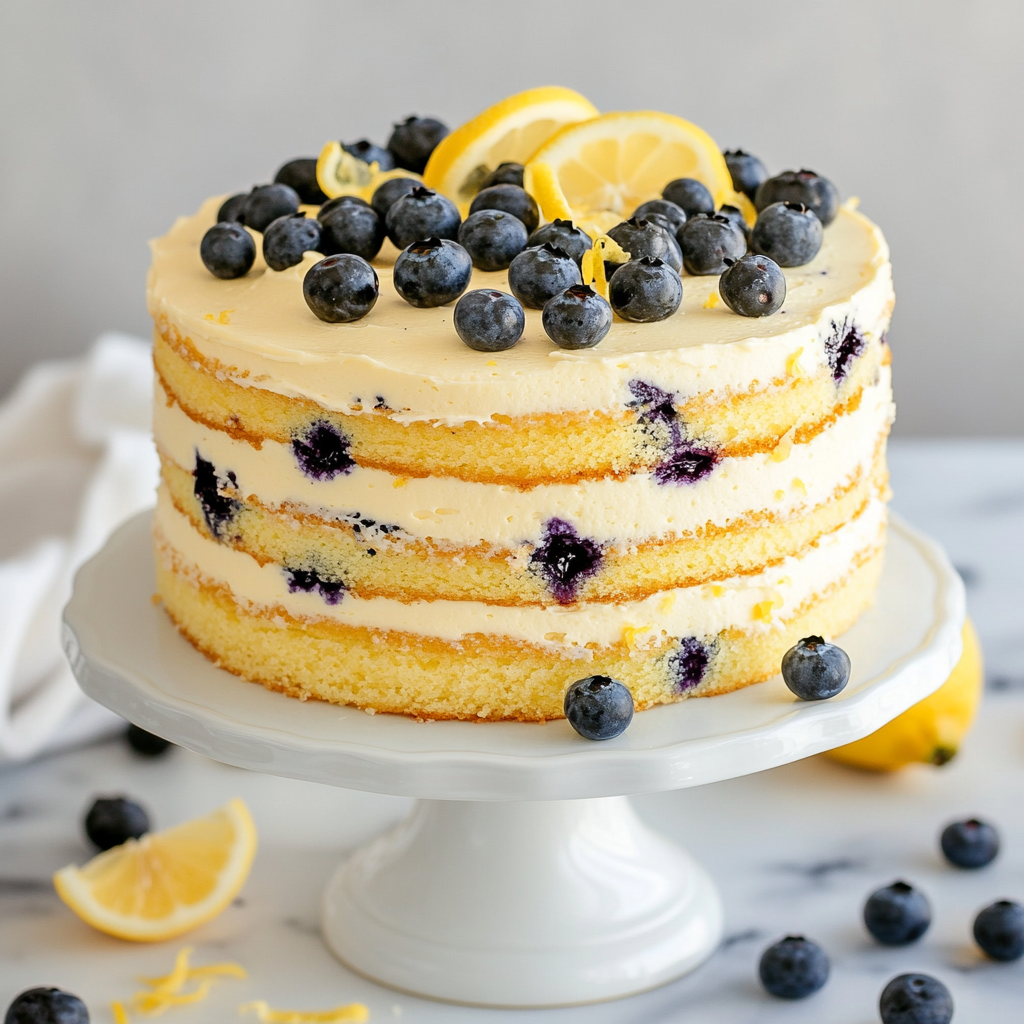A Strawberry Crunch Cheesecake marries the rich, velvety texture of classic cheesecake with a lively, crispy topping and bright strawberry flavor. This dessert offers a multi-layered eating experience: a buttery, crumbly crust provides structure; the smooth, tangy cheesecake layer delights the palate; and a crunchy cereal- or cookie-based topping adds contrast. Fresh strawberries, either sliced or macerated, crown the creation, contributing vibrant color and juicy sweetness. Whether served at a casual gathering or a formal dinner party, Strawberry Crunch Cheesecake elevates traditional dessert fare through its textural interplay and appealing presentation. In this article, we’ll explore what makes this variation unique, trace its culinary roots, outline the essential ingredients and their functions, and guide you through a detailed, step-by-step recipe to achieve a flawless bake. By the end, you’ll be equipped with the knowledge and techniques to create your own show-stopping Strawberry Crunch Cheesecake, impressing friends and family alike.
What Is Strawberry Crunch Cheesecake?
Strawberry Crunch Cheesecake is a hybrid dessert that riffs on the foundational elements of a New York-style cheesecake while introducing a crispy layer that heightens textural interest. At its core lies the classic cheesecake filling: a harmonious blend of cream cheese, eggs, sugar, and often sour cream or heavy cream, baked until just set with a luxuriously smooth consistency. This filling rests atop a foundation, most commonly made from crushed graham crackers mixed with melted butter, which compacts into a firm, golden crust. What distinguishes the “crunch” variant is the addition of a crunchy topping—typically composed of cereal flakes, cookie crumbs, chopped nuts, or a combination thereof—added either before the final bake or as a post-bake layer to preserve maximum crispness.
Fresh strawberries play a starring role, introduced either as thin slices fanned atop the cheesecake or as a macerated compote spooned over the crunch layer. The fruit’s natural acidity and bright sweetness balance the rich dairy filling and buttery crust, creating a dynamic flavor profile. In some recipes, a strawberry glaze or reduction binds the fruit topping together, ensuring each bite delivers cohesive strawberry notes. The interplay of creamy, crunchy, and juicy elements makes Strawberry Crunch Cheesecake a truly indulgent dessert, offering more complexity than its traditional counterpart.
History and Origin
Cheesecake itself traces back to ancient Greece, where early versions combined cheese with honey and wheat to create a celebratory cake served at weddings and athletic events. The Romans later adapted the recipe, spreading its popularity throughout Europe. By the eighteenth century, cheesecake recipes appeared in English cookbooks, though they bore little resemblance to today’s luxuriant versions. It wasn’t until the late nineteenth and early twentieth centuries—coinciding with the widespread availability of cream cheese in the United States—that the modern, dense-and-creamy cheesecake emerged.
The idea of adding a contrasting crunch to creamy desserts has long percolated through pastry traditions. French entremets and layered puddings often incorporate crisp meringue or praline layers to offset softness. In the United States, the tenets of crunch entered mainstream desserts in the form of cereal-based toppings—think Rice Krispies treats—and cookie crumbles. The fusion of these textural elements with cheesecake likely arose in home bakeries and local diners seeking to innovate on the standard strawberry cheesecake, a staple since strawberries became more widely available via improved refrigeration and global distribution in the twentieth century.
As dessert trends embraced more elaborate presentations, pastry chefs and home cooks alike began experimenting with combinations of textures and flavors. The Strawberry Crunch Cheesecake crystallized as a popular variation in the early 2000s, featured in cookbooks and online recipe blogs eager to “up” the classic by adding a playful, crunchy dimension. Today it enjoys a firm place on dessert menus and social-media feeds, celebrated for its balance of rich creaminess, fresh fruitiness, and crisp indulgence.
Key Ingredients & Their Roles
-
Cream Cheese: The cornerstone of any cheesecake, cream cheese provides body, tang, and a silky mouthfeel. Full-fat varieties yield the richest texture, while lower-fat options can work but may compromise creaminess.
-
Sour Cream or Heavy Cream: These dairy additions lighten the filling, adding moisture and improving the bake’s creaminess. Sour cream also contributes a touch of acidity, which brightens the overall flavor.
-
Eggs: Eggs bind the filling, coagulating during baking to set the cheesecake. They also lend richness. Room-temperature eggs incorporate more evenly, minimizing lumps and preventing over-beating that can cause cracks.
-
Sugar: Granulated sugar sweetens the filling. Some recipes blend in a small amount of cornstarch or flour to stabilize the mixture, reducing the risk of weeping or cracking.
-
Vanilla Extract & Citrus Zest: Pure vanilla extract brings warm, aromatic notes, while lemon zest or juice can cut through the richness, adding a subtle lift.
-
Graham Cracker or Cookie Crust: Crushed graham crackers bound with melted butter form a classic base that bakes into a firm, buttery foundation. Alternative crumbs—such as digestive biscuits or golden Oreos—offer flavor variations.
-
Crunch Topping: Commonly made with crisp cereal flakes (e.g., cornflakes or Rice Krispies), cookie crumbs, or chopped nuts mixed with butter and sugar. This layer can be added before baking (for a melded texture) or afterward (for maximum crunch).
-
Strawberries: Fresh berries bring natural sweetness, acidity, and vibrant color. Slicing them thinly allows for elegant presentation, while macerating with sugar releases juices that form a quick compote. A light glaze (apricot jam thinned with water, for instance) can seal in gloss and flavor.
Step-by-Step Recipe
-
Prepare the Crust
-
Preheat oven to 325°F (163°C). In a bowl, combine 1½ cups (150 g) graham cracker crumbs with 4 Tbsp (60 g) melted unsalted butter and 2 Tbsp (25 g) granulated sugar until evenly moistened. Press firmly into the base and up the sides of a 9-inch (23 cm) springform pan. Bake 8–10 minutes, then cool on a wire rack while making the filling.
-
-
Make the Filling
-
In a large bowl, beat 24 oz (680 g) full-fat cream cheese at medium speed until creamy and free of lumps (about 2–3 minutes). Scrape the bowl, then add ¾ cup (150 g) granulated sugar and beat until blended. Mix in 1 tsp pure vanilla extract and 1 Tbsp fresh lemon juice. With mixer on low, add four room-temperature eggs one at a time, mixing only until each is just incorporated. Stir in ½ cup (120 ml) sour cream or heavy cream by hand to avoid over-mixing.
-
-
Bake & Cool
-
Pour filling over crust, smoothing the top. For a water bath, wrap the springform pan’s base in heavy-duty foil and place it in a larger baking dish. Pour hot water into the outer dish to reach halfway up the pan’s side. Bake 55–65 minutes, or until edges are set but the center jiggles slightly. Turn off oven, crack door ajar, and let cheesecake rest inside for 1 hour. Remove, unwrap, and cool completely at room temperature before chilling at least 4 hours or overnight.
-
-
Assemble the Crunch & Strawberry Topping
-
While the cheesecake chills, prepare the crunch: in a skillet over medium heat, melt 2 Tbsp butter with 2 Tbsp brown sugar; stir in 1½ cups cereal flakes or chopped nuts until coated and toasted (2–3 minutes). Let cool. Slice 1 lb (450 g) fresh strawberries, tossing gently with 1–2 Tbsp sugar to macerate (10–15 minutes). Place cooled cheesecake on a serving platter; evenly sprinkle the crunch layer atop. Arrange macerated strawberry slices in concentric circles or fan patterns. If desired, brush berries with a thin apricot glaze (2 Tbsp warmed apricot jam mixed with 1 Tbsp water) for shine.
-
-
Serving
-
Slice with a hot, dry knife for clean cuts. Serve chilled, garnished with mint leaves or edible flowers if desired.
-
Variations & Flavor Twists
Strawberry Crunch Cheesecake lends itself beautifully to creative reinterpretations. One popular variation replaces the strawberry compote with a mixed-berry medley—combining raspberries, blueberries, and blackberries—to introduce a spectrum of tart and sweet notes. Macerate the berries in a spoonful of honey and a splash of balsamic vinegar for a sophisticated fruit topping, then layer as usual atop the crisp cereal or nut crunch.
For those seeking added indulgence, swap out part of the graham‐cracker crust for finely chopped toasted pecans or almonds. The nuts’ natural oils enrich the base’s flavor and amplify the crunch factor. Alternatively, stir crushed amaretti cookies into the crust mixture for an almond‐amaretto twist that pairs especially well with a limoncello‐infused filling—in which you fold one to two tablespoons of limoncello or lemon zest into the cream‐cheese batter.
Chocolate lovers can integrate cocoa by blending two tablespoons of unsweetened Dutch‐process cocoa powder into the filling and sprinkling chopped dark-chocolate shards within the crunch layer. A drizzle of melted white chocolate over the strawberry topping creates a marbled effect that’s both visually striking and palatable.
For a lighter adaptation, transform the cereal‐based crunch into a granola topping made from rolled oats, sunflower seeds, and a touch of maple syrup, then bake until golden. Pair this with Greek‐yogurt–swirled cheesecake filling—substituting half the cream cheese with thick Greek yogurt—and use a date‐and‐almond crust to keep the dessert gluten‐free and lower in refined sugar. Each of these twists maintains the signature interplay of creamy, crunchy, and juicy elements while offering fresh flavor profiles to suit any palate.
Serving & Presentation Tips
When plating, use a long, sharp knife warmed in hot water and wiped dry before each cut to achieve clean, uniform slices. Arrange individual portions on chilled dessert plates to keep the cheesecake firm. For an elegant presentation, fan thin strawberry slices across each slice’s surface, then sprinkle a few toasted almond slivers or micro‐mint leaves atop the crunch layer.
Serve alongside a small quenelle of lightly sweetened whipped cream or a scoop of vanilla bean ice cream for contrast in temperature and texture. If you’ve prepared a berry compote, spoon a decorative arc or droplets around the plate edge, then dust the perimeter with finely crushed freeze‐dried strawberries or powdered sugar. For a modern touch, use a squeeze bottle to create a zigzag of balsamic reduction or chocolate coulis.
Group several mini cheesecakes on a tiered dessert stand for buffets or tea parties. Garnish the stand with fresh strawberry tops or edible flowers to reinforce the seasonal theme. Consistent portion sizes and thoughtful garnishes transform this home-style treat into a sophisticated showpiece.
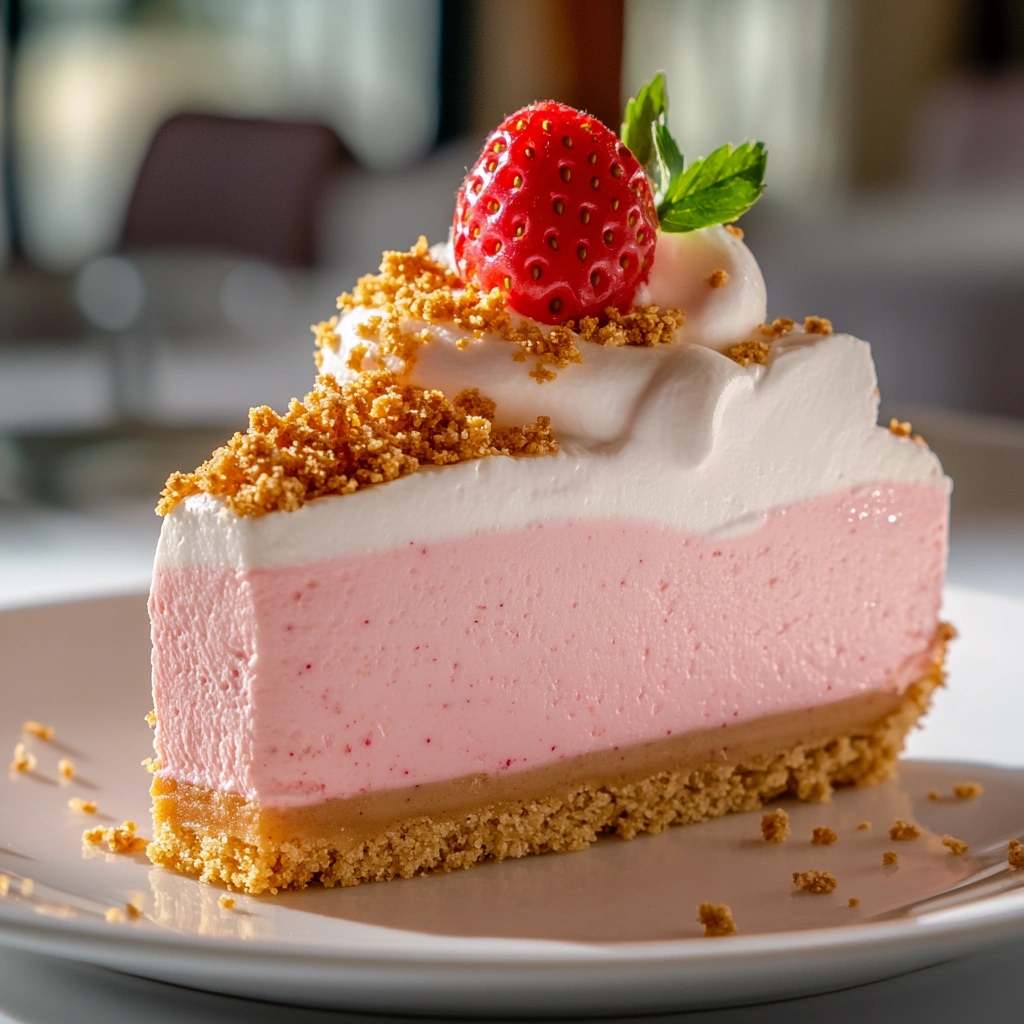
Nutrition & Health Considerations
A standard 1/12th slice of Strawberry Crunch Cheesecake (approximately 150 g) contains roughly 400–450 kcal, with 25–30 g fat (of which 15–18 g are saturated), 30–35 g carbohydrates, and 6–8 g protein. To reduce calories and saturated fat, substitute half the cream cheese with full-fat Greek yogurt and replace granulated sugar with a 1:1 erythritol blend.
For a lower-carb version, make the crust from almond flour and coconut oil, sweetened with a little stevia. Swap the sugary strawberry maceration for fresh berries tossed with a dash of vanilla extract and a zero-calorie sweetener. This approach can cut net carbs by up to 50 percent while preserving sweetness.
Dairy-free or vegan eaters can use plant-based cream cheese alternatives—made from cashews, tofu, or coconut—and a flaxseed “egg” binder (1 Tbsp ground flaxseed + 3 Tbsp water per egg). Coconut cream replaces sour cream, and coconut-oil–based butter substitutes in the crust ensure similar texture. Be mindful that these swaps may slightly alter flavor and firmness.
Allergen notes: typical recipes contain dairy, gluten (graham crackers), and potential nuts in the crunch layer. Label accordingly if serving guests with dietary restrictions.
Troubleshooting Common Issues
-
Cracked Surface: Over-mixing or baking at too high a temperature causes air bubbles and rapid rising, then collapsing. Mix on low speed, avoid incorporating excess air, and bake at 325 °F (163 °C). Use a water bath to regulate heat and moisture.
-
Soggy Crust: Excess filling seepage or under-baked crust leads to a soft base. Blind-bake the crust for 8–10 minutes and cool slightly before adding filling. Ensure the springform pan is tightly sealed to prevent leaks.
-
Weeping Berries: Macerated strawberries can release juices that pool around the cheesecake. Drain excess liquid before topping, or lightly coat fresh slices with cornstarch to absorb moisture. Applying a thin layer of melted apricot jam as a sealant also helps.
-
Dense or Rubberylike Texture: Over-beating eggs or over-baking firms the filling too much. Add eggs one at a time at low mixer speed, and remove the cake when the center still jiggles slightly. The residual heat will complete the bake during the cooling period.
-
Crunch Layer Loses Crispness: If you bake the topping too early or store the cheesecake in high humidity, the crunch can soften. Add the cereal or nut layer just before serving, or store components separately and assemble at the last minute.
FAQs
-
Can I make Strawberry Crunch Cheesecake ahead of time?
Yes. Bake and chill the cheesecake (without the crunch and strawberry topping) up to two days in advance. Store tightly covered. Assemble the crunch layer and fruit topping just before serving to preserve texture and freshness. -
What’s the best way to store leftovers?
Cover the whole cheesecake or individual slices with plastic wrap or place in an airtight container. Refrigerate for up to five days. If the crunch topping softens, refresh it in a 300 °F oven for 3–5 minutes before serving. -
Can I freeze Strawberry Crunch Cheesecake?
You can freeze the plain cheesecake (wrapped tightly in plastic and foil) for up to two months. Thaw overnight in the refrigerator, then prepare and add the crunch and strawberry layers just before serving for optimal texture. -
How do I prevent my cheesecake from cracking?
Use room-temperature ingredients, mix gently at low speed, bake in a water bath at 325 °F (163 °C), and allow the cheesecake to cool gradually with the oven door ajar. Avoid rapid temperature changes. -
What alternatives exist for the crunch layer?
Substitute granola, crushed nuts, toasted coconut flakes, or cookie crumbs. For gluten-free options, use certified gluten-free oats or almond flour mixed with coconut oil and a touch of sweetener.
Conclusion & Call to Action
Strawberry Crunch Cheesecake exemplifies how a classic dessert can evolve through simple textural and flavor enhancements. From the buttery graham‐cracker base to the tangy cream-cheese filling and the sweet-tart strawberry topping crowned by a crisp cereal or nut layer, each component plays a critical role in creating a balanced, multi-sensory experience. With the recipe techniques, troubleshooting advice, and variation ideas provided, you’re well-equipped to customize this dessert to your taste or dietary preferences.
Now it’s your turn: gather your ingredients, choose a creative twist, and bake a Strawberry Crunch Cheesecake that delights both the eyes and palate. Share your culinary success—post photos or tag us on social media—and let us know which variation became your signature showstopper. Happy baking!
Print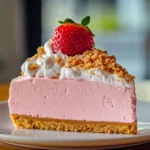
Strawberry Crunch Cheesecake
Description
This Strawberry Crunch Cheesecake combines a creamy, tangy cheesecake filling with a buttery graham-cracker crust, topped by a crisp cereal-and-nut layer and fresh macerated strawberries. Each slice delivers a satisfying contrast of textures—from the firm base and ultra-smooth cheese layer to the crunchy topping and juicy berry garnish. Perfect for celebrations or as an elegant finish to any dinner, this make-ahead dessert can be fully assembled ahead of time and finished just before serving to preserve its signature crunch.
Ingredients
- 24 Golden Oreo cookies
- 4 tablespoon salted butter – melted
- 24 ounces cream cheese – 3 packages, room temp
- 2 cup powdered sugar
- 2 teaspoon lemon juice
- 1 cup fresh strawberries – puréed in a blender or food processor
- 2 teaspoon vanilla extract
- 1 ½ cup heavy whipping cream
- 1 batch strawberry shortcake crumble
Instructions
-
To make crust, crush Golden Oreos in a food processor or in a ziploc bag with a rolling pin.
-
Add melted butter and combine until well saturated.
-
Spray a 9-inch springform pan with cooking spray, then press in crust mixture evenly around the bottom and one inch up the sides of the pan. Place in freezer while you prepare the cheesecake filling.
-
To make filling, combine softened cream cheese, vanilla, lemon juice, and powdered sugar and mix with an electric mixer until smooth.
-
In a separate bowl, beat whipped cream with the whisk attachment of a hand mixer or stand mixer until stiff peaks form. Gently fold whipped cream into cream cheese mixture, taking care not to deflate the whipped cream.
-
Divide mixture in two and removing half to another bowl and set aside.
-
Add puréed strawberries to the first half of the cheesecake mixture and fold gently until combined.
-
Pour the strawberry half of the cheesecake filling into cookie crust and smooth to even. Layer on the other half of the cheesecake filling and smooth the top.
-
Cover cheesecake with plastic wrap and place in freezer for at least 4-5 hours or overnight.
-
Remove from freezer and remove cheesecake from springform pan. Coat top and sides of cheesecake with strawberry crumb topping. Return to freezer until ready to serve – if needed, allow to thaw 10-15 minutes before serving to make slicing easier.
Notes
- Make-Ahead: Bake and chill the cheesecake (without crunch or strawberries) up to 2 days in advance. Add the crisp topping and fruit topping just before serving.
- Preventing a Soggy Crust: Blind-bake the crust for 8–10 minutes and cool completely before filling. Ensure the springform pan is well sealed to avoid water bath leaks.
- Crunch Topping: For maximum crispness, toast the cereal or nuts in a dry skillet over medium heat for 2–3 minutes, then cool fully before sprinkling. Store separately if refrigerating assembled cheesecake overnight.
- Strawberry Prep: Drain any released juices after macerating to prevent weeping. A thin apricot-jam glaze helps seal the berries and adds shine.
- Clean Slices: Warm your knife under hot tap water, wipe dry, and then slice for smooth edges. Repeat between cuts for best results.
- Storage & Leftovers: Cover tightly and refrigerate for up to 5 days. To revive softened crunch, spread topping on a baking sheet and heat at 300 °F (150 °C) for 3–5 minutes before reassembling.
- Dietary Swaps: Substitute half the cream cheese with full-fat Greek yogurt to lighten calories, or use a nut-flour crust and dairy-free cream cheese for gluten-free/vegan adaptations.


